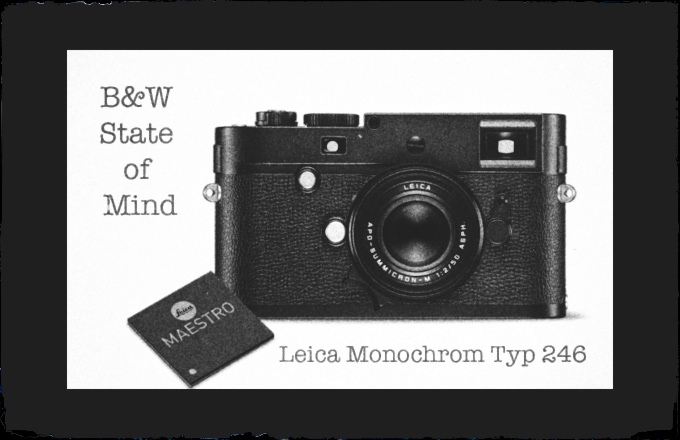
A Black & White state of mind. The Leica Monochrom Typ 246 and Zeiss 35 1.4.
(NOTE: All images here were shot on the new Monochrom with Zeiss 35 1.4 ZM lens)
It seems like just yesterday that I was in Berlin, all excited to test and try out the original Leica Monochrom. Back then I fell in love with the camera after just one hour of use on the streets of Berlin and have been enamored and fascinated by this unique niche camera ever since.
That original Monochrom came and went and came again into my life because at first I could not swallow the fact that I paid so much for a camera that only shot in B&W. I felt guilty and ended up selling my 1st MM and using the M 240 and just doing conversions to B&W. It was close, but not the same. For me, there was just something special about those Monochrom files and while I would not want EVERYTHING to always be in B&W, using a camera dedicated and devoted to the art of B&W photography just gave me more motivation and had me looking for scenes that would look just right in B&W.
It is indeed a special camera as it is one of those that has a way of pulling at your heartstrings. When you own a Leica Monochrom, new or old version, you know you have something special.
Click for larger. The new Monochrom Typ 246 is here and it’s one hell of a camera, keeping with the tradition of the original but with so many improvements all the way around. These two shots of Carl at the old Washoe Club in Virginia City, NV were taken with the Zeiss ZM 35 1.4 Distagon, which is a GORGEOUS lens.
I have to say that when Leica announced that they were releasing a new version of the much-loved M9 based Monochrom, many had their doubts. Gone would be that CCD sensor that had so much pop and snap. Many thought it would be a huge difference like what happened with the M9 to M 240 (which I feel is a 100% improvement but the files are much different with the M 240 vs M9) and many were afraid the camera would become something that did not keep with the Leica philosophy.
Well, I was one of the 1st to get this new Monochrom 246 after its release and I have been shooting with it for a while now and I absolutely ADORE it. Believe me when I say the new 246 keeps the same feel, vibe and heart tugging magic as the original..but get this..even more so.
All shots on this page were with the Zeiss 35 1.4. EXIF embedded on all shots. MUST CLICK them for larger versions!
with the old Monochrom we had a camera that gave us a new way to look at the world. Sure, we can shoot any camera in color and convert to B&W but this is different. With a true Monochrome sensor we get TRUE Monochrom images, as well as the benefits that come along with it. The new MM uses a CMOS sensor instead of a CCD sensor and I can say with authority that this new sensor (over the CCD sensor) is astonishing. Better. In every way.
You still get that true Monochrom look but we also get a much improved body, much improved battery life, much improved LCD, much improved RF experience, a feeling of a more solid construction, a new 2GB buffer for faster shot to shot times, much improved high ISO for low light and yes, even the addition of true Monochrom video.
The Zeiss is a killer lens with some superb POP on this camera..
The new Monochrom uses the M 240 body much like the old MM used the M9 body. THIS is a good thing. This body, while slighty more beefy than the old one just feels so good in the hand. It feels polished, finished and lovely. It inspires confidence. It works just as well with modern lenses as it does old classics and gone is that slight harshness that the old MM had in certain lighting. For me, I see a nice Dynamic Range improvement in the new Monochrom. The old one would always be tough in harsh lighting with blow outs but so far, this new version has not blown out any highlights for me, no matter the lighting.
Even high ISO is astonishing and I truly feel that this version of the camera gives the same detail, sharpness and even better tones that the overly gray tones of the original.
Below is a shot taken at NIGHT at ISO 12,500 hand held. Click it to see larger and see just how good ISO 12,500 is, even when shooting in the dark.
When I have the Monochrom 246 with me (which from now on I will refer to it as the MM for M Monochrom) I feel good. I feel special. I feel like I have a tool that not many others have and I feel blessed and lucky to own one. When it arrived from Ken Hansen I was excited to open it and fire it up to see if the image quality has changed, and if so, if it was a good or bad thing.
The 1st photos I shot were the usual shots this reviewer takes when a new camera comes through the household. My family, dogs, backyard..just to get a feel for it. Then I took some graduation shots and realized that this camera is so versatile and gives us stunning quality files. In the right hands, this camera has the ability to create masterpieces of art and beauty. With the right lenses, the right light and the right scene, it could be magic.
My use with it is limited to the last couple of weeks around my house and wherever I have roamed during that time. Even with that, I came away with some fantastic memories and images for my personal collection.
Click this for a larger version to see just how good this camera and lens combo is. My beautiful Debby on the right and her daughter Alison on the left.
–
Graduation Day!
One of the things with the old Monochrom was the vast amount of detail and resolution it gave us. Even with only a 18MP sensor, the old MM seemed to defy the laws of physics with the sharpness and details it gave us . The new MM is a 24 Megapixel monster and we may think that it would give us even more resolution and detail. Well, it does gives us that superb sharpness and detail that we remember from the original but I would not say it gives us loads more of resolution. I do prefer the tones from the new MM though as they are much easier to post process and as I mentioned earlier, this sensor seems to do much better with highlights.
The three images below are just snaps but take a look at the 100% crops embedded. This is what you can expect from the new MM with a Zeiss 35 1.4 Zm attached 🙂 YOU MUST click these to see the larger versions and true 100% crop!
The B&W tones of the MM 246 are quite nice. Deep blacks, deep grays, deep tones all in between. I like to do my “Tree Trunk Test” when testing B&W performance and below you can see the two shots that have rich black and grey tones that a true Mono sensor delivers. It just has that little but of extra something that makes you say “Hmmm, there is something to this B&W thing”…
Many will read this post and think to themselves..“why would anyone pay $7500 for a B&W camera when you can shoot with any color camera and convert to B&W” and believe me, I GET IT.
In fact, if I did not work out a huge trade deal for this one, I would have NEVER been able to get my own, and in the beginning I had my doubts but after shooting with the new MM for a while I can safely say that I love it, and yes, I love it even more than the original.
It can give us those delicate tones and it just feels right…
Keep in mind that at $7500, this camera is NOT cheap. It is a Leica after all and if you have been reading my site for the past 7+ years you will know that Leica is expensive. To those who still complain about that, get over it! It is what it is. Leica is not for everyone and even I go in and out at times with Leica as on one hand I feel they are overpriced and crazy..yet on the other I know how special they are not only physically but the effect it can have on you mentally, in a very positive way.
One way to explain it is that while I was out on a trip I brought my Sony A7II for color and my Leica MM 246 for B&W. I planned to shoot the Sony more as I figured I would want to shoot color. As the days went on I found myself always going for the MM 246! Why? Well, it gave me more joy and happiness to use it, it feels so good in the hand and the manual experience of shooting is just a joy. A pleasure. It motivates me just as the Leica M 246 and Leica MM and Leica M9 did before it.
It is after all, a true Leica.
So while this is not a breakdown review of the new MM 246, it was meant to go over my true feelings for it while sharing some snaps I shot with it using the Zeiss 35 1.4 ZM. In all reality, the old MM is just as special as this new one, and both have similarities. You can read my review of the old MM to get the idea of what this whole “MM” thing is all about but after using both extensively I will say AGAIN that this new MM 246 easily beats the old one in every way. There is nothing with the OLD MM I prefer to this new MM, and the battery life of this new MM is astonishing. I went all week on one charge and I still have battery left.
A Quick Comparison..Sony A7II and Zeiss 35 1.4 FE vs Leica MM and Zeiss 35 1.4 ZM
Many have asked me if I could shoot the same subject with the Sony A7II as the Leica MM, both using their respective Zeiss 35 1.4 lenses. Now, the Leica setup is MUCH smaller and much easier to carry around and hold but the Sony keeps up with the Leica MM here. Both had the same Alien Skin Neopan 100 filter applied to make it even.
Click image for larger size and true 100% crops. To my eye, they are very similar but the Leica feels much better when shooting = physically, emotionally and usability wise.
If you are someone who loves true Mono images, you can not get any better than the Leica Monochrome. Old or new, you will get beautiful images that at times can be stunners. If you want the latest cutting edge for Leica, buy the new MM. If you want to save a few grand, go with a used old version. Just be aware old and used means no warranty, and if something is off Leica will charge a pretty penny for repair. Kind of like owning an old Mercedes or BMW…upkeep, if needed, can be pricey.
The new MM is actually less expensive than the old one started out at. At $7450 for the new vs the old $8000 price for the old (now down to $6999) you are getting much more for less money. Keep in mind, that is a price without a lens! To use this camera one will need to purchase an M mount lens which will take the price up another $1000-$11000 depending on what you get.
I now own the new Monochrom and it is now sitting on my shelf looking pretty until our next outing. I even named her..yes, mine is female (lol) and her name is “inspiration” . I love this camera and for me it represents the pinnacle of B&W photography. As for B&W film, sure that is all nice and all but the Monochrom digital is WAY more versatile and even less expensive in the LONG term over film, and for me, the MM does not replicate film, it improves upon it just as the old MM did. With the right processing we can get close to the look of ANY film, but as I said, for my tastes, even better.
You will never be stuck with a low or high ISO film in your camera, limiting your shots. You will never have only 36 frames on the camera, with the right card you can store thousands at a time. You will never have to worry about the costs and time of developing, processing and scanning film. All you will need to concentrate on is the shot.
To run it down again, the improvements over the old MM are:
- M 240 body, which is a huge improvement in all areas
- Nicer shutter sound
- Much better LCD
- Much improved high ISO
- Improved Dynamic Range
- HUGE HUGE improvement in battery life
- Much better RF experience with color choice of frame lines (white or red)
- Now you can shoot true Mono video
- 2GB buffer for faster shot to shot times (3X faster)
- Richer and nicer looking files, no harshness
- Easier to process the files, no real learning curve like the 1st MM
- Cheaper than the original was at launch
- Live view as with the M 240 is available (but clunky as with the M 240)
Those are the ones I can think of off the top of my head. It is a truly spectacular camera and I can not wait to attach and try other lenses ranging from cheap old classics to the top of the line modern m masterpieces like the 50 lux and APO cron.
You have to LOVE and ADORE the art of B&W shooting to plunk down this kind of cash for a B&W only camera but if you do, you will NOT be disappointed in this new MM.
Accessories I recommend for the MM 246:
1. Walter Contrast Eyepiece. I own one and love it. See more about it HERE.
2. The JB Leica M hand grip which is my fave hand grip for any Leica M (240 or 246)
3. The Hard Graft Leica camera case and strap (I own this for my MM 246, strap is in the video on this page)
4. Wotancraft Ryker Bag.
Where to Buy the new MM 246?
My MM came from Ken Hansen. You can email him at khpny19@aol.com and see what kind of a wait list he has. Just as with the old MM, this one has a wait list at most dealers. You can also buy this camera from PopFlash.com, Leica Store Miami or B&H Photo.
ALL HIGHLY RECOMMENDED OFFICIAL LEICA DEALERS.
———-
PLEASE! I NEED YOUR HELP TO KEEP THIS WEBSITE RUNNING, IT IS SO EASY AND FREEE for you to HELP OUT!
Hello to all! For the past 7 years I have been running this website and it has grown to beyond my wildest dreams. Some days this very website has over 200,000 visitors and because of this I need and use superfast dedicated web servers to host the site. Running this site costs quite a bit of cash every single month and on top of that, I work full-time 60+ hours a week on it each and every single day of the week (I received 200-300 emails a DAY). Because of this, I need YOUR help to cover my costs for this free information that is provided on a daily basis.
To help out it is simple, and no, I am not asking you for a penny!
If you ever decide to make a purchase from B&H Photo or Amazon, for ANYTHING, even diapers..you can help me without spending a penny to do so. If you use my links to make your purchase (when you click a link here and it takes you to B&H or Amazon, that is using my links as once there you can buy anything and I will get a teeny small credit) you will in turn be helping this site to keep on going and keep on growing.
Not only do I spend money on fast hosting but I also spend it on cameras to buy to review, lenses to review, bags to review, gas and travel, and a slew of other things. You would be amazed at what it costs me just to maintain this website, in money and time. Many times I give away these items in contests to help give back you all of YOU.
So all I ask is that if you find the free info on this website useful AND you ever need to make a purchase at B&H Photo or Amazon, just use the links below. You can even bookmark the Amazon link and use it anytime you buy something. It costs you nothing extra but will provide me and this site with a dollar or two to keep on trucking along.
AMAZON LINK (you can bookmark this one)
B&H PHOTO LINK – (not bookmark able) Can also use my search bar on the right side or links within reviews, anytime.
Outside of the USA? Use my worldwide Amazon links HERE!
You can also follow me on Facebook, Twitter, Google + or YouTube. 😉
One other way to help is by donation. If you want to donate to this site, any amount you choose, even $5, you can do so using the paypal link HERE and enter in your donation amount. All donations help to keep this site going and growing!![]() I do not charge any member fees so your donations go a long way to keeping this site loaded with useful content. Thank you!
I do not charge any member fees so your donations go a long way to keeping this site loaded with useful content. Thank you!




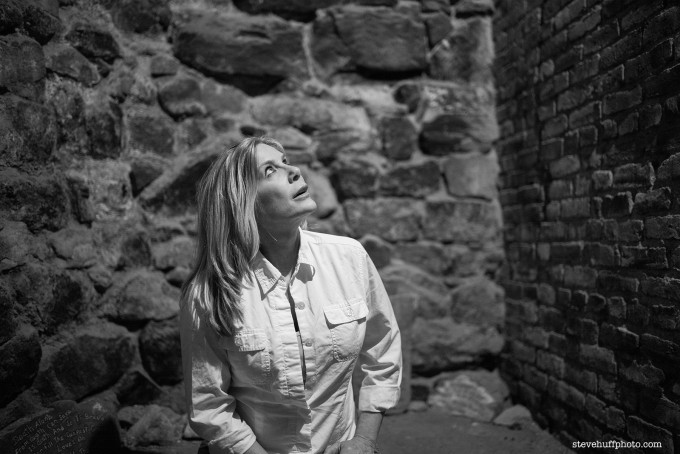

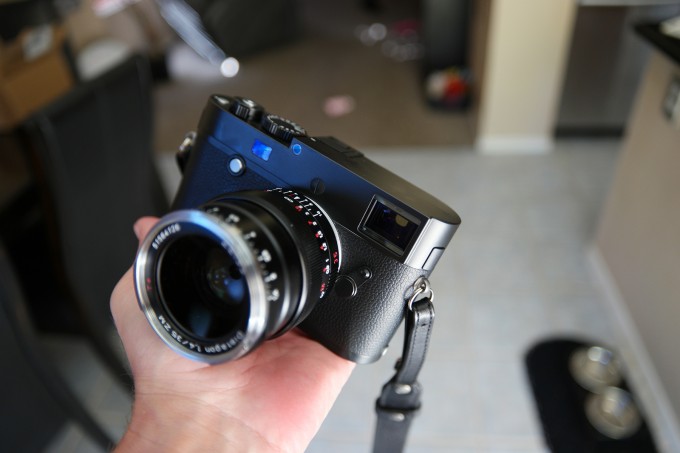
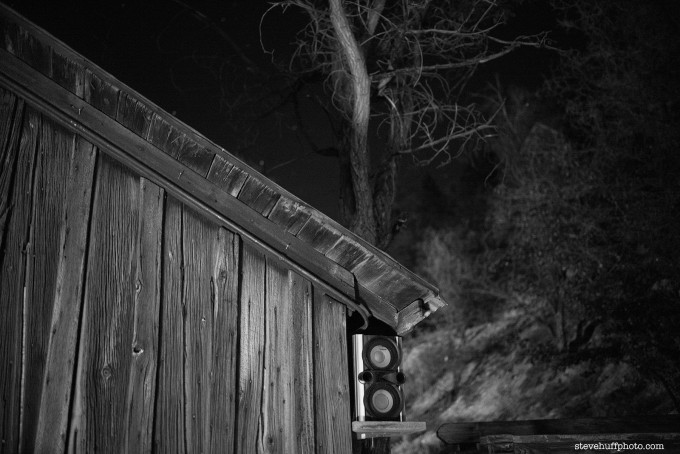
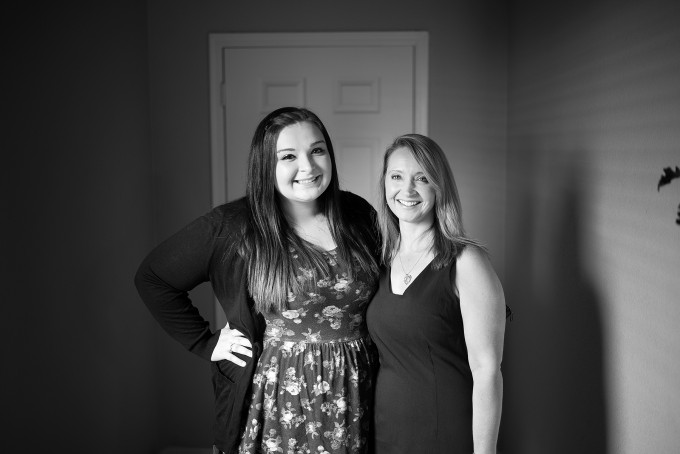


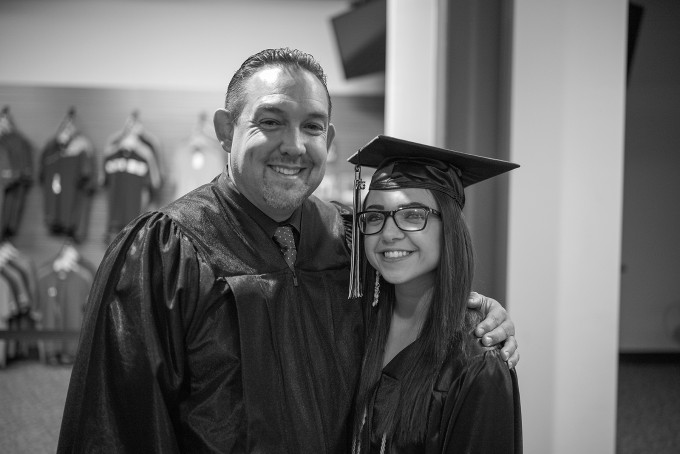
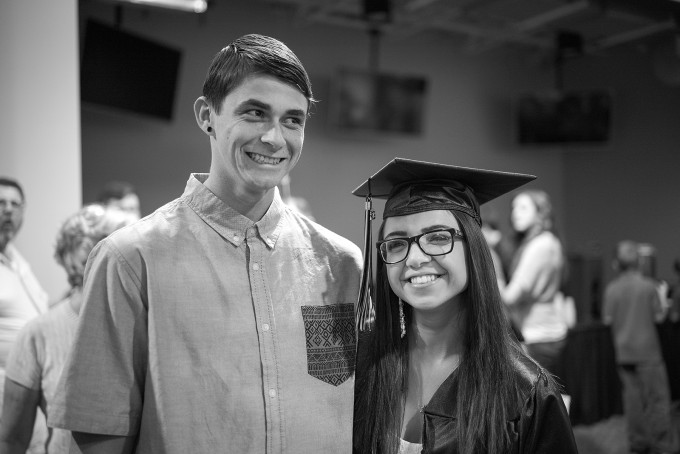

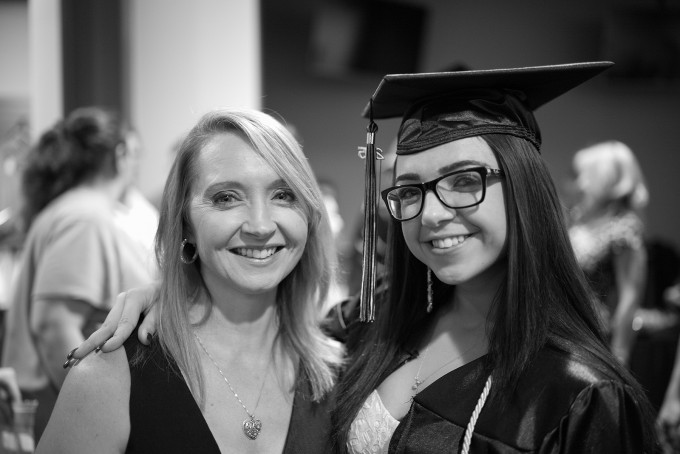
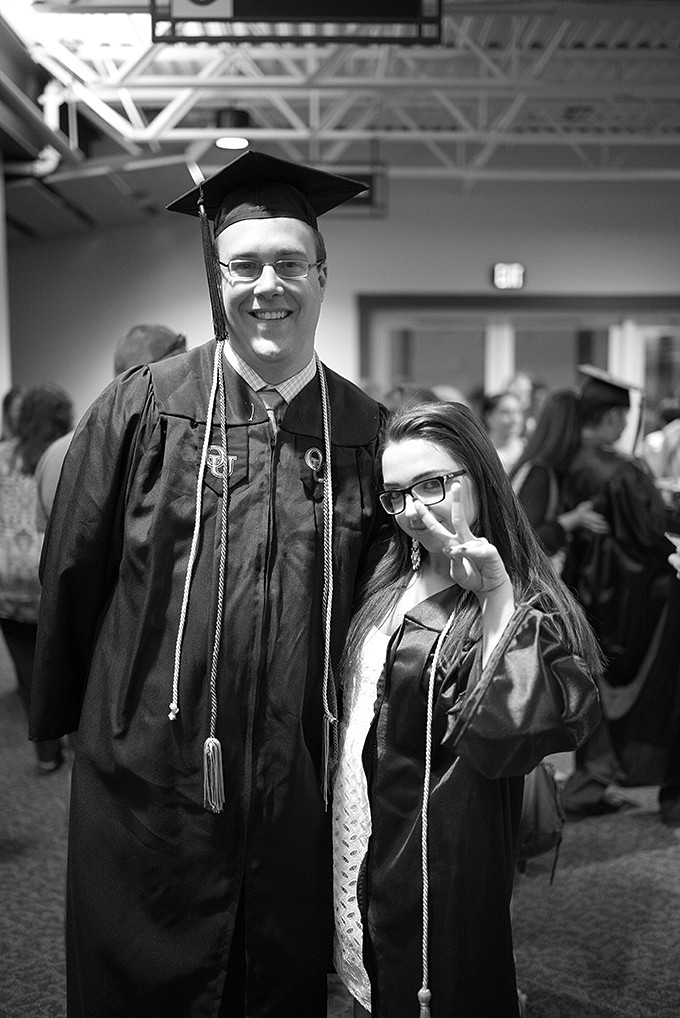



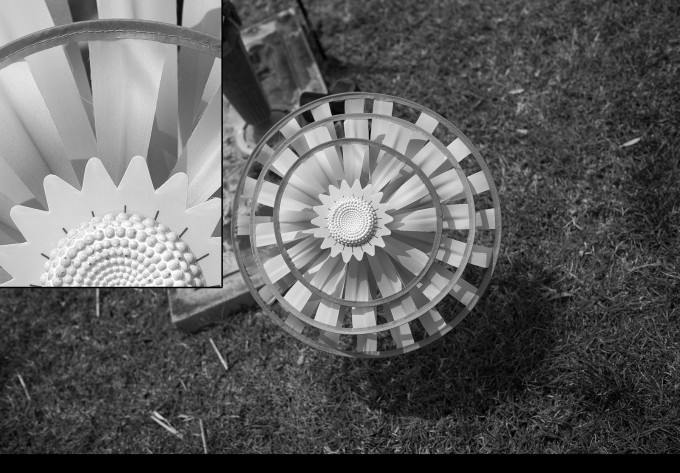
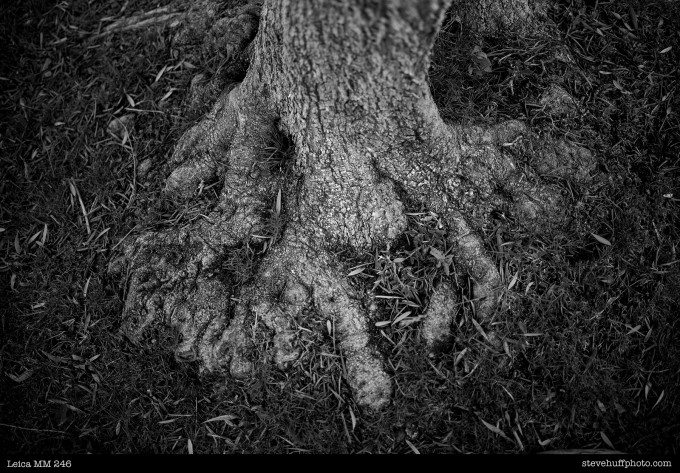
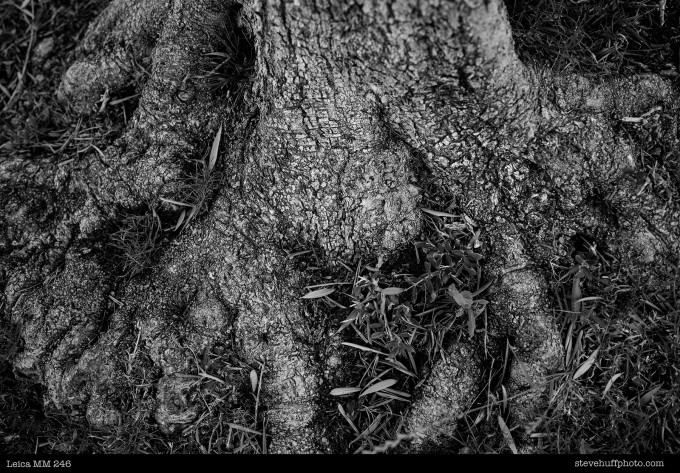
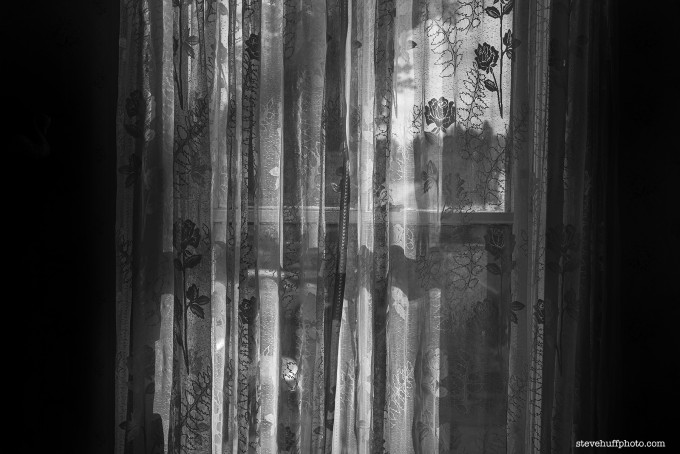
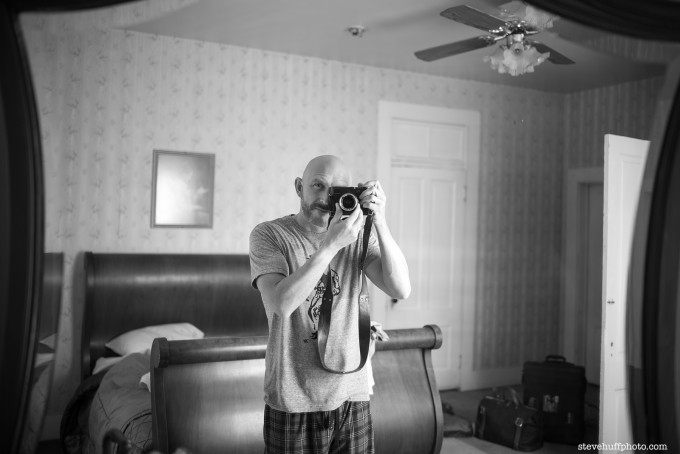
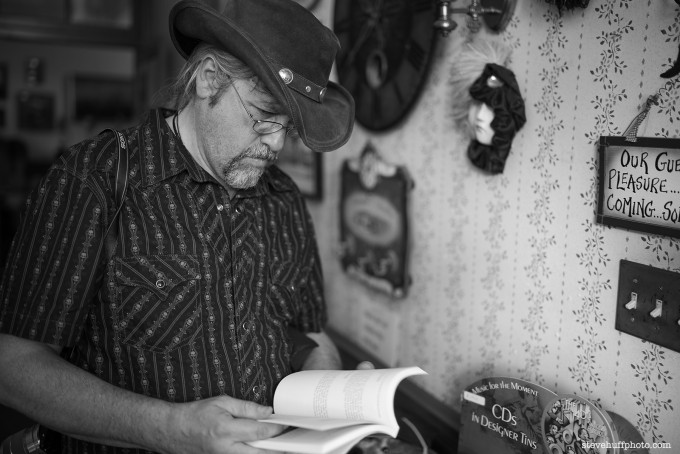
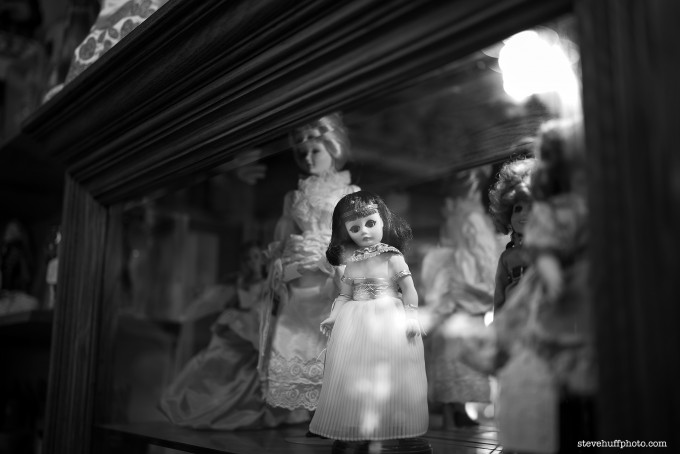
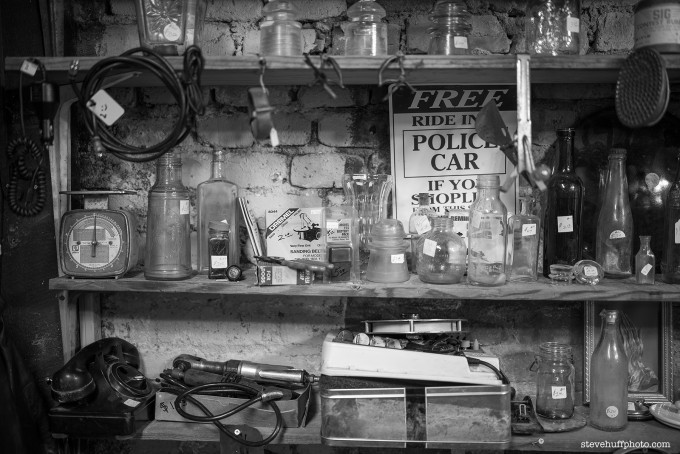
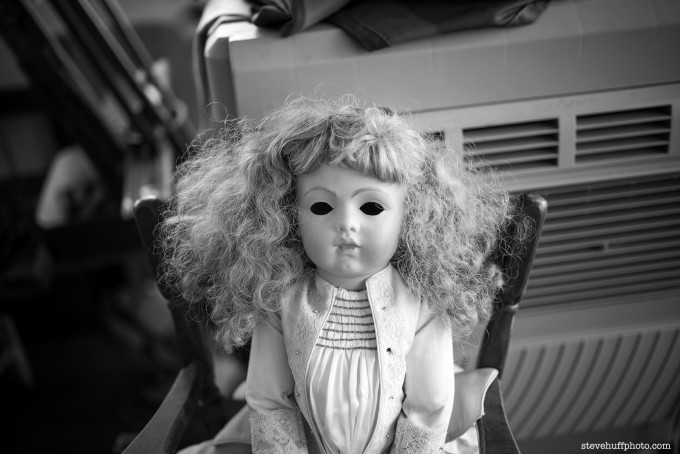
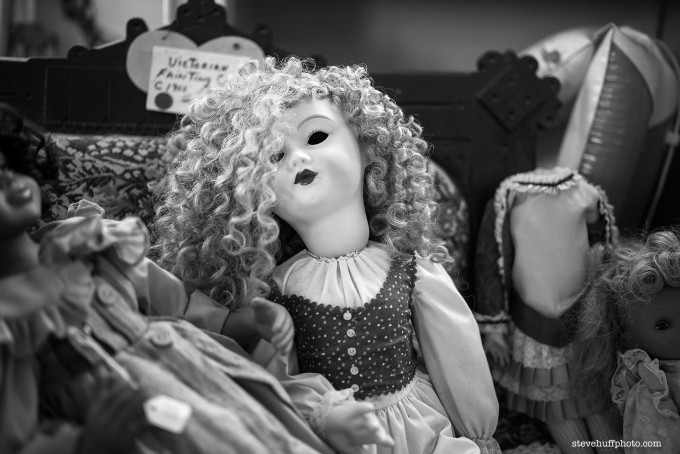
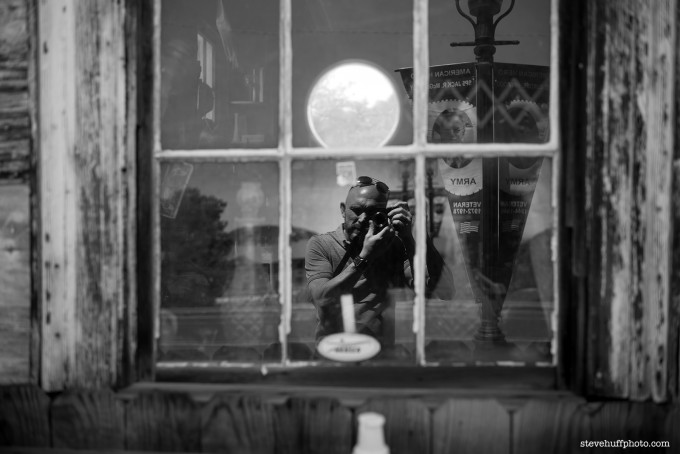
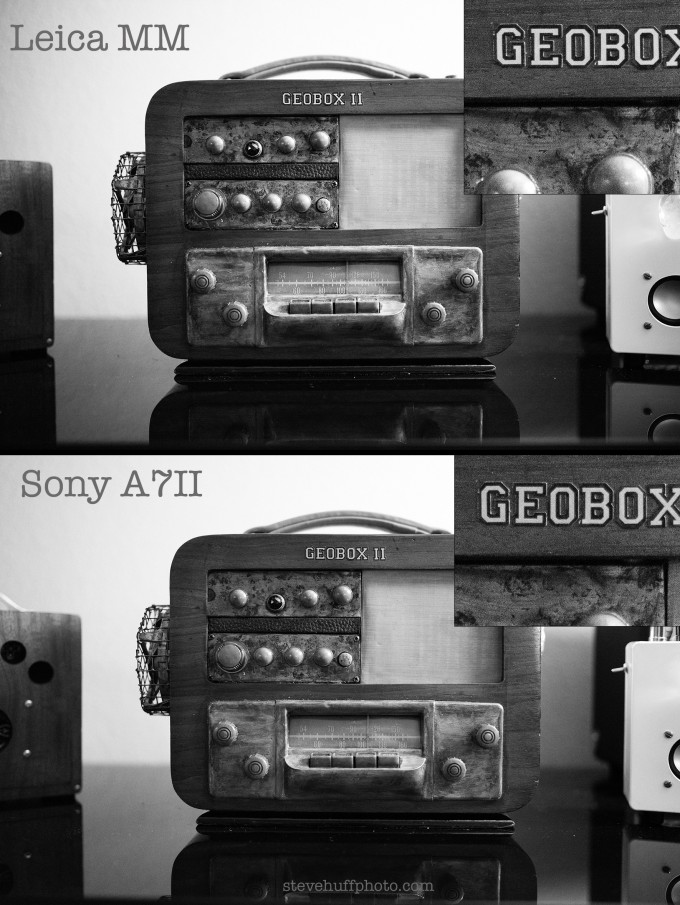
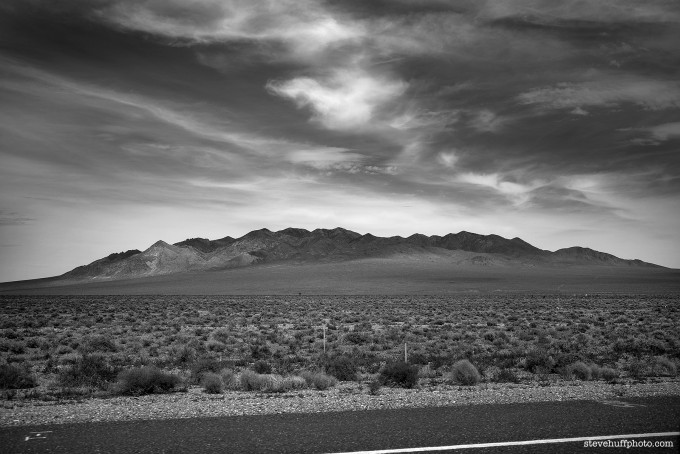
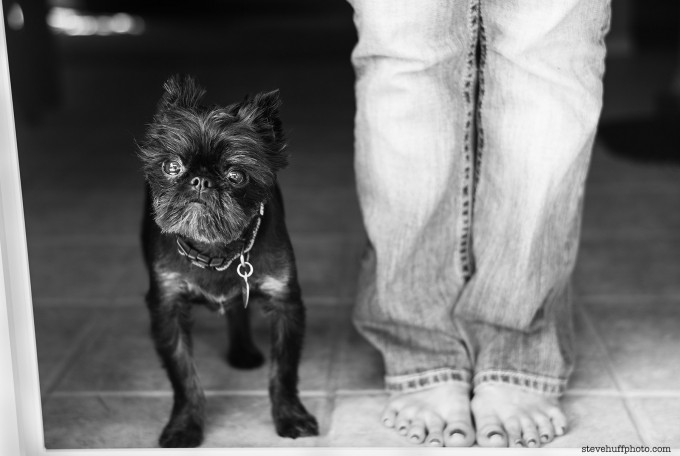
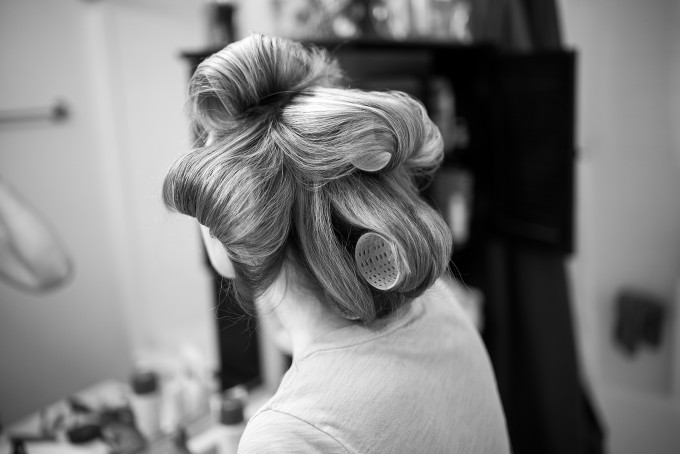
Thanks for the great review. I absolutely “get” the appeal of traditional B&W, but what is the best way to get high-quality B&W prints from digital files? I used to develop and print B&W film years ago. Not sure what the current state of printing is or what kind of equipment is needed. Amateurs like myself used to do it…is that still realistic?
I don’t understand why one would drop $7500 on a camera and then put a Zeiss lens on it that has terrible vignetting up to F/4? I thought the reason to own a leica camera is to take advent of the Leica lenses? I recommend a person to get the MM and put a Leica 35 FLE or the 50mm APO on it.
After much deliberation and reading many reviews (including all Steve’s) I finally spent a very large amount of my life time savings on a new MM246. As a previous Leica film camera user but a recent convert to the Nikon D810 I decided to lighten my load, return to one camera and one lens and own the camera I had long dreamed of and, as luck would have it, Leica just upgraded. My Leica M246 arrived this morning and I cherished the pleasure of opening it. I took four shots to check that it was working ok. I then repacked it all back in its very expensive packaging and returned it to the retailer. Why? Because there was an inexcusable amount of dust on the sensor which clearly showed in the images. To say that I am totally disillusioned and disappointed by my experience would be a considerable understatement. My retailer has agreed to replace my M246 with another one when he has it in stock, which is in about 4 weeks time. But you know, tomorrow I am going to ring him and say forget the replacement and send me a refund. I don’t care how good the images are, when I pay £5750 for a camera body I want it to be perfect and not remind me, yet again, of all Leica’s poor quality issues that I experienced so often with the M7. I gave Leica another chance and they let me down. I’ve never had any similar problems with Nikon and there’s a perfectly good Fuji x100s in the cupboard just waiting to be used.
ALL Leica’s will have dust on the sensor. My trick? Shoot lenses wide open (they were designed and optimized for wide open shooting, Leica M glass) and you will never see the dust, you will retain the “leica look” and never have an issue. Also, every 2 months or so I use a rocket blower on mine and it fixes them right up if I do want to stop down. All full frame cams have dust on the sensors, or get dust on them. It’s un avoidable when you have a huge sensor exposed to the elements (when changing lenses)
Does not the Leica have an ultrasonic built-in sensor cleaner, then? A bit remiss if this is the case, as many, I’d say most users, don’t use their lenses exclusively wide open.
Dust on my A7, Nex7 and 5N will not be visible until I stop down below f8, and usually then it is only visible in large areas of playin colour, such as the sky. But as I rarely, if ever, have any need to stop down below f8 dust on my Sony cameras is rarely of any concern.
Sorry but I didn’t by a Leica to shoot it wide open or own expensive Leica lenses and not use the aperture ring. As for dust, I’m sure I would accumulate dust on the sensor, I just don’t expect Leica to include their’s in my new camera. Maybe I should be pleased Leica actually didn’t charge me for it.
Hi Steve,
As always, great entries to the site, thank you. I’m now shooting with a 240 and 246 and I am wondering how have you optimised the menu settings on your camera? Especially the 246?
I did nothing in camera, I shoot only RAW so camera setting do not matter when shooting raw. I just open the RAW file and maybe tweak contrast, shadow and highlight sliders, that is all.
Thank you for replying. So which metering do you use and do you use auto ISO and AWB?
The difference between the Leica and the Sony is simple. 8000 dollars.
No, its around $5500 😉
http://en.wikipedia.org/wiki/The_Emperor's_New_Clothes
Great M246 review…..suggest that all posts relating to the criticism of the cost of Leica equipment should be excluded…your reviews are great….we all know Ferraris are expensive however reference to price has little to zero relevance when discussing the merits of such vehicles from a purely performance based perspective…. Something this good as we all know will cost….rightly or wrongly…lots!
My suggestion is why not focus on performance and ability, not money please.
Someone mentioned you can only use lenses out to 135mm. Well, that is not true with the M246 since it can adapt Leica R lenses which had 1200mm lenses if I remember the longest correctly. I personally use an APO 180 + APO 2x extender and get super sharp results.
Yea…I really have to get my hands on that Zeiss 35mm Distagon ZM…..killer lens.
I may not agree with Ibraar on a lot of things but he is right when he says no camera will by just using it make someone instantly into a better photographer
The right camera might make someone enjoy photography more as in the experience of shooting or pride in ownership or make it easier and faster to take a photo. And these are all great things.
But a camera by itself no matter how cheap or expensive is going to give someone that doesn’t know composition instantly how to frame a great photo. That just takes vision and a lots and lots of practice. Unless you are one of the gifted ones that it just comes naturally to and I’m jealous of you.
The comparison should be between native monochrome digital cameras and monochrome conversions from digital color cameras- not all of this “Film vs Digital”.
Unfortunately, our choices for film types are drying up. Panatomic-X in Microdol is gone. That would be the combo to compare with the M Monochrom if anyone felt compelled to do so. I’ve had the M Monochrom for 2.5 years now, just starting to explore it.
For the new M246: I hope Leica comes out with a firmware revision to put 14-bit mode back into the selection. Giving up bit-depth for a little savings in write-speed crippled the M8, think Leica would have learned a lesson.
lenshacker.
Too right. The raison d’etre of the MM surely must ultimately be based on comparisons with b/w images from high end digital cameras, whether these are natively taken in-camera, or post processed.
The loss of film choice is a sorry state of affairs, but it also means no new emulsions are being developed. (We’ve still to wait to see if Ferrania gets off the ground.) Fortunately, I am still able to buy my staple film still here, FP4, but for how long?
Nice one Terry, yes, Digital is more versatile (generally) hence it’s so popular – and any Digital camera can be used to a great amount of flexibility – you probably know, but for those who don’t; when Steve McCurry shot his last roll of Kodachrome, he used a Nikon F6 – but with it he had a Nikon D4 (I think) to make test shots first – to gauge the lighting, the look, the angles and his final was with the F6 – that’s the beauty of Digital but ANY Digital.
And if I were to choose a camera for a job it’d be a Fuji X100 series for ‘Street/reportage’.
If it’s about versatility, and general photography, a Canon 5D series will tick all boxes, it will enable me to shoot everything from landscapes to wildlife, people to macro – all at a blistering accurate speed with the Best results overall. With it I can take snaps of the kids or pets, holiday snaps or landscapes and marvel at the detail as I examine the photos – sorry I mean “files” on screen. And I can print and print BIG and if it’s BW I desire, One can get BW with it as good as anything else provided one knows BW and how to create it in the digital darkroom – and that requires a knowledge of zones, and tonal range and relationships between tone (and a knowledge of what colour compliments another when converted to BW) no MM or BW film can save you from this. To be honest, if money were no object I’d have one in my armoury rather than any Sony, Olympus or Leica – I’d consider a Nikon though!
Photography can be an Art (some photography isn’t – it’s crap), about creative vision and seeing, since when has photography been all about sharpness or clean grainless images?
Since when has it been about examining “Files” close up? or “Bokkeh” ?
or shooting street hookers at night with a gazillion ISO (as apart from Astrophotography or parties/gigs I cannot think of any other reason to shoot at night)
Huge prints are rare, I’ve only seen them in galleries, and generally landscape photographs shot with DSLR’s or LF/MF Film/Digital which doesn’t require speed.
I have been shooting with Polaroid back and Fuji FP3000b and love the results and the effect. They’re low resolution images, but look great, take great pleasure in shooting them and gain great satisfaction from the results – and I have shot 3 packs so far (30 photos ish).
the MM is a niche, boutique camera, wonderfully built with great results (in Mono), but it wont turn one into W Eugene Smith, Alberto Korda or Leni Riefenstahl nor will it save one from poor technique and ‘especially’ knowledge of tones, relationships and zones.
No BW film can match the Detail and Sharpness of MM, you see more richness in pure BW, this is something you’ll get over the film
A somewhat bold statement. How experienced are you in shooting and processing film? Have you ever used medium format or larger? 35mm film may struggle to compete purely on sharpness, I grant you, but sharpness is but a single factor in any image, and it isn’t necessarily the final arbiter, it depends very much upon film and developer choice and particularly how large you intend printing. You really need to see what can be achieved with a proper silver halide print over an inkjet.
This last point is very important. How many of today’s digital users and who’ve never used film have ever seen a quality silver image print upon which to comment and compare?
Nice images Steve, the files coming out of the new monochrome seems to me less grey with a bit more DR than the files out of the old mono. without PP. I still like the uniqueness of the CCD on the M9 and MM, and now know how to PP the files of the old monochrome, and thus will be keeping mine, as long as Leica stays around and still services its products. I just like the feel and have gotten used to the way the cameras work, in spite of the limitations.
Yes indeed. Less grey is what I see as well. There are pros and cons to this. The old MM is more unique in its look, the new 246 looks a little more like a color converted file. Both are great but the old MM did have more greys it seemed.
I love film and shoot film as often as I can but I would dearly love to have this camera and I agree with a lot Steve has to say about it. I have never shot with it or the original Monochrom but their files are beautiful and rich and allow plenty of scope for manipulation. There is no disagreement with that anywhere I have looked.
If I owned this camera I would continue to use b+w film as well -I do not see it as a replacement for film it is a camera out on it’s own and should appeal to anybody who values the creative possibilities it can bring. There is a youtube video about a guy shooting a Monochrom and using the files to do archaic analogue prints -which are beautiful- check it out.
Keep shooting Monochrome be it film or digital !
google for huf f para normal…
Nuts, really really nuts. I think a certain grasp on reality might be needed.
Imho a case of the Eperors new clothes.
You nailed it in the fewest words.
Great review! Thanks, Steve.
That lens looks terrific. How bad do you find the intrusion into the 35mm frame line? That and weight are my only reservations and are why I’m also considering a 35 Lux Pre-Asph. Optically this appears far better, but weight and viewfinder blockage are real concerns.
Sorry but I don’t like the pictures from this camera or the old MM. The world is not as sharp and as crisp as shown by these cameras. The tree trunks for example are completely un-real. The bark has become like crocodile skin – sharp to the point where the bark has vanished and all that’s left is strange designs. Look at real bark with your eyes and then at these photos, nothing is the same. Modern digital cameras (especially Leica) have transported us into a false way of seeing – ultra sharp and too dynamic. i get better black and white pictures from a 10 year old Canon with 6mp. My M9 with JPEG b&w is almost as good as the Canon but miles better than MMs. Cheers
Now, that’s an interesting observation! I think you might be right.
I think it’s also about how we look at photographs these days. Computer monitors are not like paper, and smooth surfaces in the photos become waxy on the screen. Skin has little structure yet textured backgrounds are overly dramatic in these pictures. Leica is ahead in the race towards sharpness utopia and thus changing the way we see. I tried an MM and the only way I could get ‘gentle’ pictures was to shoot JPEG. I turned down the sharpening to its minimum and the contrast down one click. Then in post I did not apply any sharpening or any other enhancement. The pictures looked reasonable and skin less waxy, but still not as good as my ten year old Canon. The camera itself is a work of art as Leica has always been, but not a good tool for making photographs. cheers
Julian,
You are absolutely dead on correct. I can’t stand sharp photos for all the reasons you stated and then some.
Would you rather capture all the detail and then have the choice to dial it back in post, or start with a file that has little detail?
yes, you are on to something and I tend to agree.
I shoot video on hi-end cameras, such as the Alexa and Red Dragon, and instead using modern lenses with them, like f.ex. the Zeiss Masterprimes, I use old Zeiss Superspeeds or 70’s Leica glass, for this very reason: too sharp, too much dynamic range, too ‘digital’…
The market is into “sharp” at the expense of the mid tones. We’ve been herded into this obsession with sharpness. Not so much with your 6mp Canon. How your image gets adjusted and reproduced is at the mercy of software development; dialing in more or less sharpness, emphasizing certain colors, etc… It’s in our minds that digital is simply substituting a sensor for film, it’s much more than that. There is already post processing done before we get to the image. Film is much the same, each film having their own characteristics. The difference is film characteristics were more stable over long periods of time, Kodachrome was Kodachrome for many years. By choosing one film over the other there is much more control, versatility. To be that versatile with digital cameras we would need several cameras, as I have learned. As in the case of the MM, if you want to shoot color then you need to have another camera. Well, for film it’s much the same, bring along two cameras with different films. We worry about time and inconvenience, meanwhile we spend our time here with endless debating over nothing. If we love what we’re doing and want certain results then we don’t think about the inconveniences and versatility.
Julain Ward, I agree, after thinking about what you wrote, you’re right. It’s not the unnaturalness; as this exists in using say Velvia 50 for landscapes and such, but it’s the unpleasant sharpness or rather clinical lines which aren’t natural. And looking at your gallery, fantastic BW work, you know what you’re talking about so I pay heed to your words and thoughts.
I think this isn’t exclusive to the MM in particular – it seems to be the case with most latest Digi cameras, my Lumix GX7 results were similar, portraits were razor sharp, but sharp to the point of unpleasantness, there wasn’t any more ‘detail’ than any other camera, just that the detail was too sharply defined in an unpleasant way. Sure there was bokkeh and good colour, but the sharpness was ugly – a factor which lead me to sell it.
Fuji images tend to exhibit this a lot – the lack of an anti-aliasing Filter does this damage in many ways – it isn’t natural, and it is not pleasant.
A factor which has held me back from purchasing one.
Yes I have also wasted so much money on new equipment and not liking my photographs. Camera companies are constantly trying to impress us with sharpness and DR to the point that it’s impossible to dial it back in post production. Even raw files are manipulated by this trend, on purpose by computer techs. One of the things I like about my old M9 is the honesty of the JPEG files. I can produce flat pictures if I want – I am in control. When I tried the MM I find I have lost that control and everything is Disney and ‘exciting’. I don’t care about a million ASA or other fancy specs if the pictures are in-real, and I’m sorry to be a deserter in the Leica Club but these cameras are paper weights. Cheers
I agree! Its almost too clinical.
I have to agree with Steve here on the mm vs film
Now it may take me a long time to shoot enough film even with lab coats to equal 7k years for me
But what the mm or even any digital will give me is convenience of not having to wait or pay a lab to develop it for me yes I can do it myself but like Steve says that is time
But the cool thing for me is that the comparison with the a7ii isn’t that far off for a lot less money so for someone like me that really does understand that the Leica joy of shooting and would love this mm camera it’s just not in the cards right now for me so I might break down and get the Sony and wait a couple of years till there are 246 cheaper on the used market
Absolutely beautiful results with the MM 246. The Sony A7 II b&w shot converted with the plugin is within striking distance but a bit softer and a bit less tonality.
That Zeiss ZM 35 1.4 is one heck of a lens. Looks like it could equal or even best the Leica equivalent.
I’ve had a 246 for just days I can tell you it’s the best camera I’ve ever had and I have allot the results are stellar portraits landscape just incredible thanks Steve for sharing your great photos and the long hours writing this overview and keeping us informed
Don’t want o get into a Leica MM vs “….” 35mm/120 Camera here but the following statement “…Monochrom digital is WAY more versatile and even less expensive in the LONG term over film,…” is nonsense. First of all, versatility?it’s Mono! Any Film camera can shoot any Film so long as it fits the format – Colour or BW – C41 BW, E6, IR etc. So that’s versatility straight out of the window.
I wont bother elaborating on other reasons 🙂
Versatility is through the roof with the MM vs something like even an M6. Why?
You are not stuck at or around one ISO – If I have ISO 100 film in, and then have it all day – can’t be used at night, no way no how.
No ISO limit. I can shoot at 12,500 and get GREAT results, or I can shoot at ISO 320, no film issues
So basically I am not limited by LIGHT or film speed.
The images out of the MM can indeed be made to look just about like any film stock you need, or close enough as to non pixel peepers could be fooled.
You are not limited to a # of frames, ever.
If you want color, go to an M 240 and you have way more versatility yet again over film, in TONS of ways.
Also, MM will be less expensive over the long term and save you loads of time. Not sure about you, but my time is precious.
So yes, the MM is way more versatile than shooting B&W film – in every scenario
What about IR, can you shoot IR with the MM? Also what about extra slow speeds like iso 20 (Adox CMS) :P? And extremely long exposures, does the CMOS overheat with 1 hour exposures? I know these are rare scenarios that most people don’t care about, but they are part of “every scenario”
Steve, thanks for the response.
The MM by it’s very nature isn’t versatile. It is a Monochrome Camera, which means it can ‘only’ shoot Monochrome.
Film is versatile as you can use any Film you desire. You’re not stuck with one look, and with Post processing, well, the same applies to both Digital and Film – one can make Pan 25 look like Neopan 1600 if one so desires, so these are moot points. Folks don’t shoot Film with versatility being the prime factor.
In your post you weren’t clear whether you meant B&W Film or Film in general, as it reads as if you’re talking about Film which could mean pretty much anything.
If changing ISO means it’s way more versatile, this statement by it’s very essence is acknowledging the Fact that Digital, by that I mean ANY Digital camera is more versatile, as any Digital camera can change ISO or Modes on the fly – so this isn’t exclusive to the MM. Everyone knows Digital is quicker and more versatile, but ironically, the MM is possibly the ‘only’ Digital camera which isn’t! Sure the M9 or M240 are, but the MM or M260? certainly not and no amount of spin or justifications can change a simple matter of Fact.
With the MM or MM260, by it’s very nature, you are forced to own not one, but TWO M bodies (one Colour and one Mono if one so desires) as this cannot shoot colour, that’s a massive amount in terms of outlay isn’t it?
I’m not going to go and total things up but it is an exorbitant amount, sure if money is no object and one is pretty well off go for it as then, yes, the points you make do hold true – you’ll get a lot of versatility with two M bodies, but one’ll always be limited by one’s photographic skill and creativity – you can’t polish a turd.
And as regards Versatility, if that’s what matters and if that’s the whole point, why bother with a Rangefinder in the first place? Get a Canon 5D Mk X and be done with a camera that can handle anything from Street, to Wildlife, macro and Landscapes – for nature and people and whatever you throw at it. Sure, you might get slightly sharper photos when looking at 100% magnification with an M lens, and the 5D is slightly bulkier in real terms (you can hardly put an M in your shirt pocket) but so what? Again one’s limited by one’s skill, technique and ability.
The MM and MM260 are fantastic cameras with great possibilities, and gain favourable reviews, and if reviewing is the point then game on, great stuff, but when (as I believe and think) misleading comments like these are made then I feel they deserve to be confronted, addressed or questioned and if as a result I stand corrected then I will always accept that, but in this case not.
As regards being less expensive over the long term, how long are we talking? Three years? A life time? I know people who have sold their ( 2 to 3 year old) MM’s and have invested in the Mm260 at a great (relatively) loss – with absolutely no improvement in their photography, but these folks don’t claim to be aiming for this or justifying it, they just want the latest and best regardless, and I laud that.
My time is very precious too, hence I do not spend my time machine gunning spraying photos all day every day, I’ve other things to do, but the point is I would get the same results whether I used a $100 Olympus OM2n with a 50mm f1.8 or any MM body and a Summicron (or whatever Leitz lenses are equivalent in focal length) and there’s no way on Earth the MM will save me anything in it’s lifetime – I’ll need another body for a start.
Anyway, I do enjoy a debate, and I do enjoy your reviews man and the site is as always great!
I meant Type M246 not 260!
There is no way film camera more versatile than digital one..period, you were comparing an apple with orange, like steve said get 240 then you have versatilty against film.
With a digital camera you’re locked in. With film you are not, there are film choices. Yes there is post processing. If you offer post processing a the route to versatility then most any digital camera will do. I have five different digital cameras, each offering a different “look” or “interpretation” by the cameras software. I only need one film camera to do the same.
You can’t take advantage of the Leicas versatility and possible savings if you can’t afford the cost of entry. If I shot a roll of 36 each week the cost of film and outside developing is still well under $500 per year. Though, I think a roll of 36 per week is a lot. If we each got one really good image a week, something worth printing, that would be 52 prints per year. That’s a lot of production for most people. There isn’t enough wall space. Even selling that many prints a year is good business, or giving away prints. Anything more and we’re talking about snapshots, birthday party’s, graduations, recording events and history; iPhone territory. If you’re going to be really serious there will be a lot of post processing, a lot of time invested whether film or digital. Then, by comparison the extra time film takes is miniscule. Like, how much time does Michael Kenna spend on each photo from that he prints and sells? How many different prints has he sold over the years? For everyday shooting digital is on average the most practical. Or so it seems. Wedding photographers will tell you that in years past you could have a set of proofs from film delivered to the bride and groom within a week. Digital has slowed that down to sometimes months. One photographer on this site mentioned that he shot his daughters wedding with, as I recall, an M6. Took the film to a lab and had an album ready the next day to take on their honeymoon. Time and cost savings and convenience? Like a lot of things, it all depends on what we intend to do with our work.
Ibraar,
I’m with you, but you’ll never win an argument with a digital user. The versatility Steve refers to isn’t a very strong argument for the MM’s alleged versatility, over film, or just about any other digital camera out there. In fact, as you allude to, the MM is severely restricted in versatility especially if one considers it as a system camera, where it is very, very limited indeed.
a) It can’t auto focus. Even Canon Eos cameras from 1989 can, and so can your Contax G’s, and so can many other film cameras.
b) It can’t handle lenses longer than 135mm, and even here, its RF focusing can be suspect.
c) It is no more versatile in not being stuck to a single ISO value; every other digital camera is equally blessed with this feature. I wonder now how I ever managed when I was shooting film back in the days when film reigned and I was limited to perhaps 400 or 800 ISO film (or 1250 ISO with Kodak Royal X Pan in 120 roll only) and perhaps push processed when really necessary. Ah, it is coming back, I used a tripod for night shots! Yes, in those days, dedicated photographers thought nothing about carrying one of these around. For the majority today’s digital users, I suspect this would be a big no-no. It isn’t that easy to grab street shots with one, is it?
d) It is not more versatile in using flash memory and not being limited to 36/38 exposures from a single cassette which a 35mm camera mostly is. Every digital camera can beat this. Some, expensive, 35mm cameras were provided with film backs, Contarex Super comes to mind, so changing from b/w to colour wasn’t an issue, and certainly not in the days when photography was more leisurely and photographers had to think more about what they were going to shoot on a particular day or session. Some Mamiyas, every Bronica, some Rolleis, and every Hasselblad camera all took interchangeable backs.
e) “Images from an MM can be made to resemble any film” (one cares to name.) The MM’s images are indeed impressive, but won’t equal the best film can produce. (I have to qualify it by saying the “best” because this is the claim for the MM.)
f) It can’t shoot colour or b/w film stock. But then this is a singular advantage of any film camera. One can swap (more or less) at will. Buying another very expensive M body just to do this makes no sense at all, to me.
However, whatever the pros and cons, the most versatile camera is the one that delivers the results for the respective user. And despite what I consider its obvious shortcomings as a single trick device, I’d like one but I can’t justify the purchase, even though I could, just about, afford it.
Amazing that they can sell these things, isn’t it? The only relevant thing you say is in the next to last sentence, Film and digital are different mediums. Both fun. Silly to argue at length one over the other.
Jack, but that’s the point, people DO argue at length, and usually from ignorance of what film can do. And of course, relevance is only relevant if one understands the points being put forward, or simply chooses to ignore them. I can’t say what camp you are in, so you have my benefit of the doubt.
But I would ask you to re-read what Steve said about film, and if that doesn’t prompt comment, then please tell me what would.
I shoot both and like both. I think the over heated rhetoric on this site is rather pointless. It consists of people restating the obvious with remarks masquerading as profundity and originality, over and over again. I come on here to read Steve’s take on new products and to be amused by the silly repetitive comments. I also suspect that most of those digging at Leica have never shot with one and aren’t particularly good photographers.
Jack, being English, it wouldn’t be proper for me to say whether I was a good photographer or not, but if knowing how to deploy all the movements of 5×4 studio monorail makes me a technically competent one, then I’ll admit to this. I do own 7 film Leica’s and over the years have shot with 6 of them.
The sole one not to have been used, apart from a test shoot, is a virtually mint IIIf with f2/50 collapsible Summicron. I simply look at this and salivate. :D)
Well, if you haven’t shot with digital Ms perhaps you shouldn’t speak with such assurance. The M and the new Monochrom are pretty incredible, and I have both. I also have and still use 3 film Ms and an R6.2.
You claim technical expertise but your initial post strongly implies that you need the programs of an SLR to function and that you shoot a lot of large telephoto lenses.
That is not the strong suit of any Leica M so it is silly to dispute Steve’s comments on that basis. For fast street shooting or “walk around” shooting the digital Ms are incredibly sophisticated and versatile. They are also great for landscape and architecture in the hands of someone who knows what he is doing. Ditto for portraiture and, frankly, just about anything but fast action sports (the spray and pray school) and birds and animals in the wild. But in the hands of someone who knows how to shoot great results are attainable in those types of shooting also.
Nuff said.
“your initial post strongly implies that you need the programs of an SLR to function and that you shoot a lot of large telephoto lenses.”
Thanks for making me laugh, but may I suggest that you don’t give up your day job as a clairvoyant as on this showing you don’t appear to be very good at it. Nuff said, as you imply.
Perhaps you need to reread your first post. It amounts to a screed against Leica, the digital Ms in particular, and Steve’s claim about their versatility. I countered that with specifics and you did — What?. You say you are “laughing ” and saying something about being” English”? That’s not exactly countering an argument or staying on topic. I remain of the opinion that you shoot Canons and Nikons and know zero about Leica digital Ms.
If only for the record, or to show how wrong you are, I shoot with Sony using my R1, A7, Nex7 or Nex5N as the mood takes me. And, no, I don’t have any tele lenses unless you consider the 120mm (equivalent) reach of the fixed Zeiss lens of the R1. I am a w/a man from 15mm to 35mm mostly, and making use of my M & R lenses. I’m afraid you got this completely wrong, yes?
Except for auto focus your cameras won’t do anything that an M or an MM won’t do. And do better, frankly. And, by the way, the M and the MM246 with live view quite easily accommodate R lenses, some of the best ever made, beyond 135mm. Get your facts straight before you start dissing Leicas.
I know how good Leica R lenses are, I’ve got a few, which I use on my original Leicaflex, SL2 and R7. I wasn’t “dissing” Leica, whatever this means, simply pointing out that the M doesn’t have the versatility claimed in Steve’s post. You are obviously a Leica digital fan boy and will see conspiracy in any comment that appears to question the Leica. Apart from the unique monochrome models, the fact is Leica digital bodies really aren’t as good as the best of the rest, and yes, this includes Sony. Now Leica lenses are a different kettle of fish altogether. They have always been the best imaging lenses in whatever decade you care to name, and as for the current crop well, it is my view that they remain the best. But as you like criticising my comments, I await your putting me down for championing Leica lenses.
The 12500 Iso night shot is very impressive for noise!
Theres not much difference imo between the a7ii shot, but there is A difference, nonetheless. Both in edge detail in the crop and in some of the tonal changes. Whether this would be meaningful in prints is an interesting question. Ive got no doubt the MM is a much nicer camera to use, though.
Id love either version of the MM. I love the whole premise of them and remain hopeful that someone else will jump into Mono-only at a more “everyday” price point.
Another great insight into a camera most of us will never get the chance to own, steve. Many thanks once again.
Hey Steve! could you post an Picture with the a7s or a7ii and the 35mm? Cant find a nice Picture of this anywhere on the web. And nice Review!!
These are very nice images and I agree that the dynamic range seems better than the original MM. However, I am seeing some blown highlights here. In the 3rd graduation photo there’s a large blown highlight on the man’s forehead. And in the 1st dog photo there are blown highlights on both dogs. So while I do think it’s fair to say that the M246 is less prone to blowing out highlights than the MM, one should not expect that the M246 has done away with the problem completely.
There are always going to be blown highlights – nothing can stop this as no amount of dynamic rage has yet managed to match the human eye.
Detail is superb and tones too – but I think Steve needs to work on the images here as they’re very ‘grey’ flat and lack tonal range and values necessary – probably because they’re out of camera?
BW always needs work though so no surprise out of camera images are too grey – I’ve yet to come across a Film which gives 100% results with full range from 0 to X for every image uniformly straight out of development and I see no reason why the MM should fare any different.
Hmm,I was tempted until i saw the A7ii comparison shots. The M246 does look a it better, but i would love to see a comparison shot with either the m240 or a7r, something without an AA filter on it.
“One of the things with the old Monochrom was the vast amount of detail and resolution it gave us. Even with only a 10MP sensor, the old MM seemed to defy the laws of physics with the sharpness and details it gave us .”
That’s because it had an 18mp sensor, not 10.
i have a question regarding the Leica Monochrom, I hope the way I explain the question, that it makes sense. For a workflow on the Leica MM, do you PP the image as it is delivered just tweaking the image versus PP it with a tool like Silver Efex? Which is what I do with my Fuji x100 files. In another words, would the Leica MM provide a significant starting point? Or you wouldn’t use Silver Efex because that defeats the purpose of owning the MM? I hope that makes sense… Thanx D.
Daniel it is all about personal preference in my ooinion. You can use SilverFx to achieve a certain result though just using LR is as far as you need to with the MM files (ive never owned the type 246).The tonal range and depth of those tones allows you plenty of flexability in post production. In my opinion SilverFx can be applied to really “stretch” a file as far it can go. You wont really need it with the MM files….but again its personal preference.my website are all (bar a few film images) images taken with the MM and PP in LR only. Hope it helps. http://Www.andygemmellphotography.com
thanks for putting up the comparison with the a7ii steve appreciate it.
to me I can barely tell a difference and that is only with the 100% crop looking at the images at a normal viewing and if I didn’t have them side by side, I couldn’t tell. maybe some of you out there could
Nice review.
I’m waiting for my 240 incl. a viewfinder and a R-adapter, so I can use all my R-lenses.
Tempted to order the 246 too.
really amazing samples. Somehow much more appealing than the BW samples in your FE 35/1.4 review. I really love the way this ZM draws. In the comparison picture, the leica+ZM picture looks punchier. You made my purchase-decision even more tough now 😀
I guess you reconsidered your previous statement about the FE 35/1.4 being the best 35 out there,right?
Killer Combo!!!
The old MM is 18 Mega pixels right?
Yea, I was thinking of the M8, lol. Will fix it now.
Very nice review Steve…the new Leica Mono sure is a bute. Now that that one’s out of the way, let’s get down to it! How bout you bust out that A7RMKII and give us a look before we go crazy! 🙂
Steve, thanks for the review. It would be interesting to see MM vs MM246 photos.
There are loads of both here:
http://www.stevehuffphoto.com/who-am-i/the-leica-monochrome-sample-image-gallery/
Yes, I was thinking more of a side-by-side of the same subject matter taken with the same lens. Thanks for the review.
I feel like these cameras are up there, honestly….iPhone 6+ phones. 🙂
If you aren’t driving an exotic sports car, your not rich enough for B&W only cameras or 1000$ phones!
🙂
erics75218… nobody ever said Leica cameras were designed for mass appeal. Leica prices are not a secret so I am not sure what benefit your comment was intended to convey.
Awh no real benefit really, just sayin’ that some things are super super expensive and I personally couldn’t ever afford one!!! But maybe someday I’ll have iphone money, leica money! Can I interest you in a print? 🙂